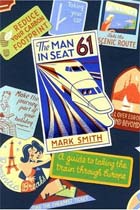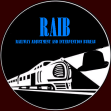Clearing up. It avoids pests. And confusion.
The Freedom of Information Act can certainly be described in some quarters as a good thing, especially where I’m concerned, as it is an enabler for me to find out things that might not be readily avaialble via “the usual channels” (which for me on here is trawling through news websites). So, when there are organisations that are bound by the terms of the Freedom of Information Act, I will certainly use it to ask them for information. Such as recently when I wanted some clarification on the future disposition of NI Railways’ soon to be redundant fleet of Class 80 and Class 450 DMUs, and the loco hauled “Gatwick” stock, together with the newly acquired DBSO. Thus it was that, following my question asking specifically about what the plan was for the Class 450 units amd the coaches, I got the following response from the FOI administrator at Translink:
I can advise that once we have taken delivery of the new Class 4000 trains we will begin to retire all the fleet types mentioned in your e-mail. The Class 4000 order is sufficient to replace the existing, older fleet and also to enhance service frequency on the local NIR network. Class 111 locomotives have been modified and re-commissioned to operate in push-pull mode with the MKII/DBSO (Gatwick) train set. This train set is not presently in active passenger service but is retained as a strategic reserve, particularly for cross-border Enterprise services.
That’s half an answer I guess, and is more comprehensive than the answer I got in regards to the loco hauled set in April. The money, time and effort (which was not inconsiderable) spent on getting the DBSO will not it seems totally go to waste if the set is to be retained for some level of actual use. Indeed, given the continued ambition for an hourly service, what price getting these coaches in for a refresh and setting them to work? But, it is the lack of an answer over the Class 450 that got me thinking. Obviously I’ve spoken about SWIFFT and their need to obtain rolling stock if they gain permission to run their own trains on the Waterford-Rosslare, and that the Class 450 would likey be ideal for this purpose. But the Class 450 fleet numbers a total of 9 units, and SWIFFT probably wouldn’t need so many. Given their age, they would need sources of spares, which would make it likely that some would be cannibalised to maintain the rest. But, given the shortage of multiple units in Great Britain, the TOCs can’t go around cannibalising their older trains to keep the rest running, so how do they do it? There are plenty of rail vehicles being scrapped at the moment, and, given that the Class 450 operates using a push-pull system (with a motor car at one end), replacing the engine would not be as difficult as it might otherwise be. Likewise, the Class 80, of which NIR retain a total of three 4-car units, could (potentially) be considered for use, assuming the remaining units were mechanically sound. The three units are in fact six 2-car trains coupled together, making a total of 15 sets that could be used. Which got me thinking. We all know that Iarnród Éireann is not a huge fan of running trains, and would probably love to dispense with the various rural routes that don’t run into Dublin. Although they are required to maintain the route of the Waterford-Rosslare, no doubt they will be grumbling profusely about it, in much the same way as they probably do about the Limerick-Ballybrophy, the Ballina Branch, the freight only Drogheda-Navan and the closed Mullingar to Athlone. So why don’t they just sell those pieces of infrastructure? No doubt there are other groups like SWIFFT around pushing for restoration of rail services (one such is the Midland Railway Action Group), so would it not be feasible for these groups to band together as a collective, with the backing of a major transport company, and make an offer to buy the rail routes, taking them off the hands of Iarnród Éireann and letting them choose who and whether to run trains? On these routes the level of service would likely not be intensive, allowing more use out of the elderly trains being removed by NI Railways. In order to reduce the level of cost, the trains themselves could be leased rather than purchased from NI Railways, with the lease stating that they would be responsible for maintenance. The new operator would then have a decent enough fleet of 15 trains (or there abouts), the power to timetable what it likes because it would own the infrastructure, and no bother at all for Iarnród Éireann. Additionally, because it owned the infrastructure, it would be in a position to offer other services, both in terms of passenger trains, improving connectivity, and freight. Something perhaps to think about?













[…] set” rake of coaches as what they describe as a “strategic reserve”, just as they said they intended to in answer to my FOI request. Yet, by all accounts, they don’t seem to be taking a great deal […]